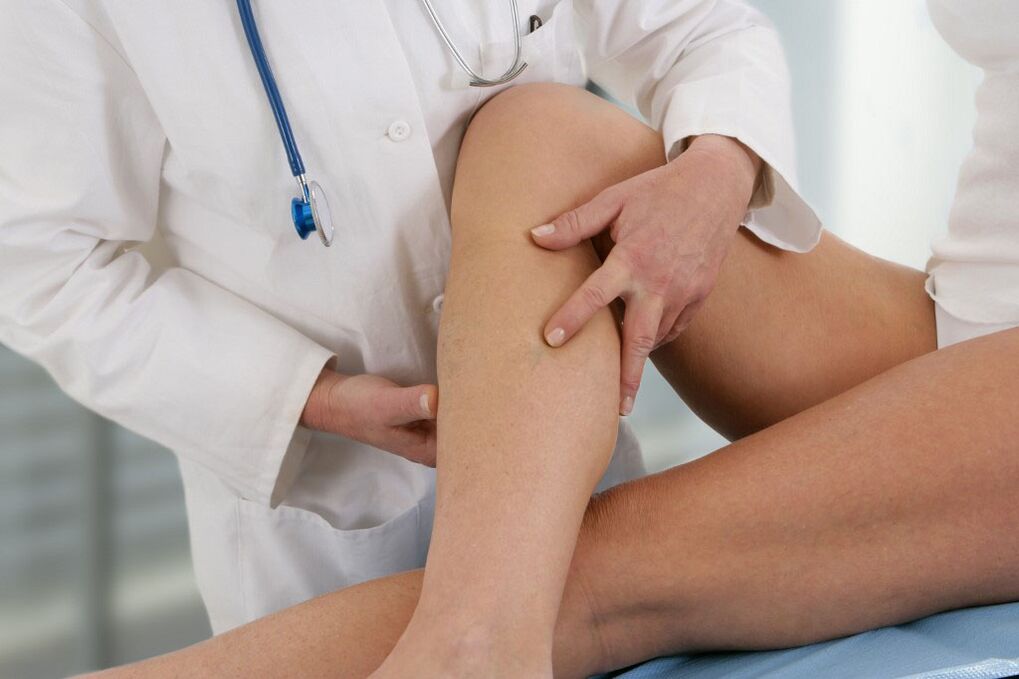
What are varicose veins
What factors influence the formation of varicose veins
- Chronic load on the vessel wall - this may be a monotonous load (forced to sit or stand during the day) or a high load associated with weightlifting (for example, in athletes).
- Hormonal imbalances can affect the condition of your vein valves. This is why varicose veins often accompany pregnancy, and teens and young adults who are actively experiencing hormonal changes are also at risk. Varicose veins also threaten women who take hormonal contraceptives.
- genetics. Blood vessel walls contain so-called structural proteins - collagen and elastin. Their proportions ensure the elasticity of the veins. A person may have a congenital disorder of the ratio of these proteins, resulting in weak vein walls. This determines the innate tendency to develop varicose veins.
Why are varicose veins dangerous?
- Rupture of dilated veins, followed by massive bleeding;
- Phlebitis - inflammation of the blood vessel wall;
- Thrombophlebitis - an inflammatory process in the walls of blood vessels, the formation of blood clots (thrombi) on their inner surfaces;
- Thrombosis - a blood clot blocking the lumen of a vein, impairing blood flow;
- Thromboembolism - A condition in which a blood clot breaks away from the site where it formed and travels with circulating blood to other structures in the body, blocking smaller blood vessels and causing ischemia;
- Nutritional ulcers are long-term wounds on the skin of the legs that do not heal and are caused by impaired blood circulation and tissue nutrition.
Varicose veins: what to watch out for
- Do your feet swell at the end of the day? Do you feel heaviness, pain, or leg cramps at night?
- How much of the day do you spend in the same position (sitting or standing)?
- Does your relative suffer from varicose veins?
- Do you have spider veins, twisty red capillaries on your legs?
What to do if you have varicose veins
- Dietary nutrition to improve blood rheological properties, strengthen blood vessel walls, prevent edema, normalize digestive processes and reduce weight (if necessary);
- Wear a compression garment (stockings, socks, or tights) with a specific compression level.
- Venous tone (venotonics) - improves the tension of the blood vessel wall, thereby restoring the dilated veins to their original state;
- Heparin - reduces blood viscosity, reduces the risk of blood clots, and increases blood flow;
- Anti-inflammatory – Helps eliminate inflammation and pain.
- Sclerotherapy. A modern procedure that eliminates varicose veins by injecting a special substance called sclerosing agent. With the help of this drug, the dilated blood vessels "stick together", then the general blood flow is cut off, and blood begins to circulate through healthy veins.
- Laser and Radiofrequency Vein Removal. Both methods are very similar; they are based on thermal damage to the vein wall, the result of which is a "seal" that turns into a scar and then disappears. The procedure is a proven alternative to traditional surgery and is performed under ultrasound guidance. This makes it possible to act only on pathological lesions without damaging healthy tissue.
- If surgery is required, the clinic performs mild, minimally invasive procedures: phlebectomy, phlebectomy, dissection, transection. They are almost always applicable even in difficult situations.























